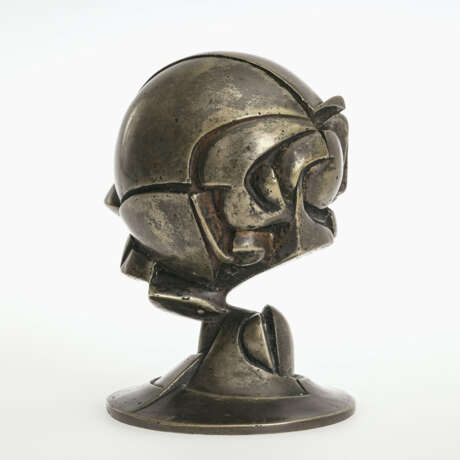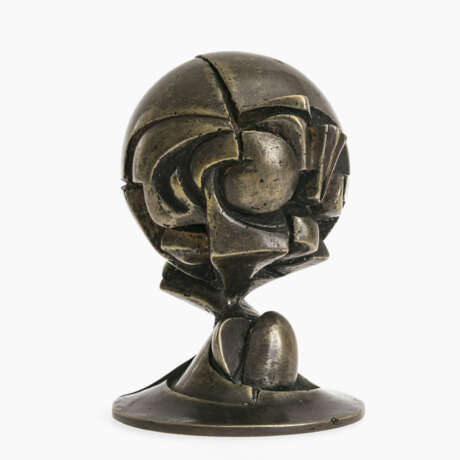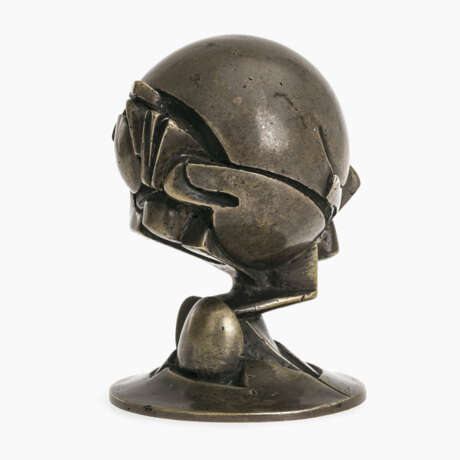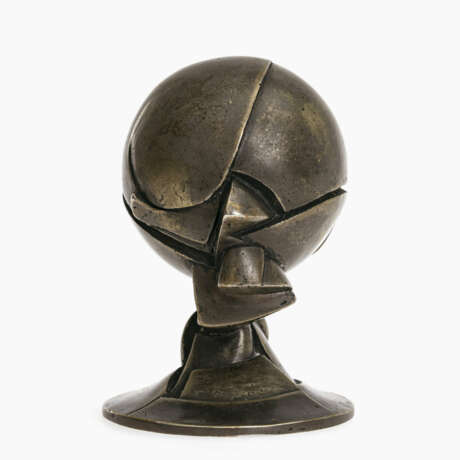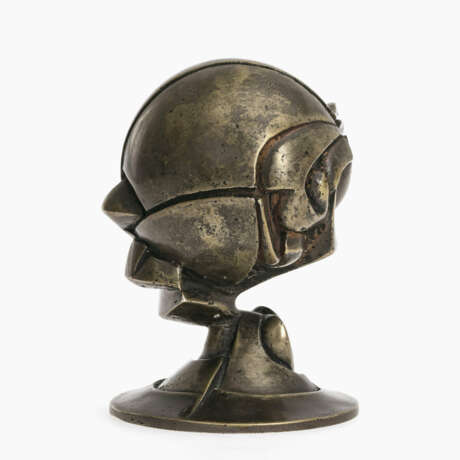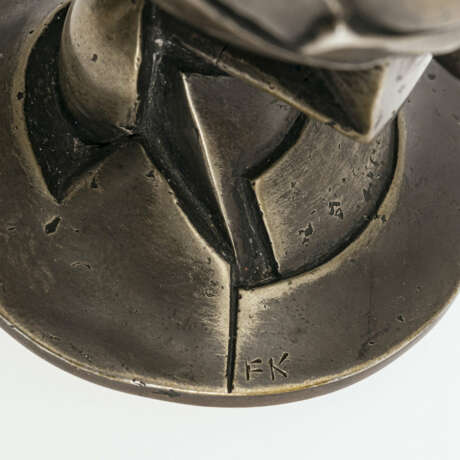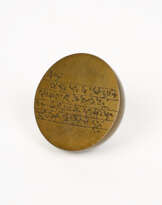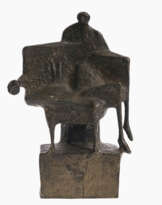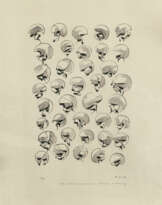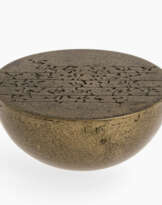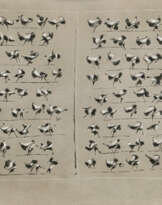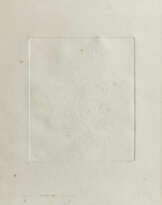ID 1167361
Lot 436 | Fritz Koenig. The Sphere. 1968
Estimate value
€ 17 000 – 20 000
The Sphere. 1968
Silver. One of only six silver casts. Monogrammed "FK" on the back of the base. Diameter 7.5 cm. H. 10.5 cm.
Miniatur der monumentalen Bronzeplastik "Kugelkaryatide N.Y.", bekannt als "The Sphere", die von 1971 bis zu den Terroranschlägen am 11. September 2001 zwischen den Zwillingstürmen auf dem Vorplatz des World Trade Centers in New York City stand. Die mehr als 20 Tonnen schwere Bronze konnte nach den Anschlägen als einziges noch erhaltenes Kunstwerk beschädigt, aber weitestgehend intakt aus den Trümmern der eingestürzten Twin Towers geborgen werden. Seither ist die Bronzekugel ein bedeutendes symbolisches Mahnmal des 9/11-Gedenkens. Die Entstehung der Großen Kugelkaryatide N.Y. (WVZ Clarenbach 416) fällt in die 1960er und frühen 1970er. Zu dieser Zeit war Fritz Koenig als Künstler in den USA etabliert. Nachdem der Architekt des World Trade Centers, Minoru Yamasaki die Arbeiten des deutschen Bildhauers in der George W. Staempfli Gallery in New York gesehen hatte, bat er Koenig eine Brunnenanlage für den Platz zwischen den beiden sich gerade im Bau befindlichen Zwillingstürmen des World Trade Centers zu entwerfen. Im Jahre 1967 erhielt Koenig den Auftrag der Port Authority of New York and New Jersey als Bauherr und Grundstückseigner des neuen Welthandelszentrums an der Südspitze Manhattans. Die Große Kugelkaryatide N.Y. fällt in Koenigs Schaffensphase verschiedener Karyatiden, bei der Koenig ein Ringen mit beengenden oder lastenden geometrisierenden Massen inszeniert. Koenig wollte mit seiner Plastik einen formalen Gegensatz zu den Wolkenkratzern markieren. Der Künstler entschied sich für einen stilisierten Globus, der aus einem Sockel mit Schaft erwächst. Gefertigt wurde die Skulptur vom Winter 1968/69 bis Ende 1971 in Ganslberg bei Landshut. Für die Arbeiten am Gipsmodell in Originalgröße musste eine neue Atelierhalle in der Nähe von Koenigs Gehöft und eigentlichen Atelier errichtet werden. Bei der Fertigung seines Kunstwerks wurde Koenig von dem Südtiroler Bildhauer Josef Plankensteiner (Kitzbühel 1941-2001 Südtirol) unterstützt. Plankensteiner arbeitete über dreissig Jahre für Koenig und realisierte aus kleinen Modellen fast sämtliche größeren Karyatiden in Gipps, die später in Bronze gegossen wurden. So fertigte er auch für "The Sphere" zunächst ein Modell in Originalgröße aus Gips. Ab 1969 wurden die in 67 Einzelteilen zerlegten Gipselemente der Kugel in der Münchner Kunstgießerei Hans Mayr in Bronze gegossen. Anschließend wurden die einzelnen Bronzesegmente in die Werkhalle nach Ganslberg gebracht und dort in sechs große Teile zusammengeschweißt. Nach insgesamt vierähriger Planung und Herstellung wurde die fertige Skulptur erneut zerlegt und zum Bremer Hafen transportiert. Vor Ort wurden die Bronzeelemente der Kugel sowie der Sockel wieder zusammengefügt, so dass Koenigs Skulptur als Ganzes in einer eigens angefertigten, überdimensionalen Holztransportkiste den Seeweg über den Atlantik nach New York antreten konnte. 1971 wurde die "Große Kugelkaryatide N.Y." schließlich auf dem Plaza des World Trade Centers installiert und wenig später feierlich enthüllt.
Werkverzeichnis: Clarenbach 415
provenance: from the estate of the sculptor Josef Plankensteiner (1941-2001), who worked for Fritz König for over 30 years
| Artist: | Fritz Koenig (1924 - 2017) |
|---|---|
| Auction house category: | Sculpture Classic Modern |
| Artist: | Fritz Koenig (1924 - 2017) |
|---|---|
| Auction house category: | Sculpture Classic Modern |
| Address of auction |
Kunstauktionshaus Neumeister Barer Str. 37 80799 München Germany | ||||||||||||||
|---|---|---|---|---|---|---|---|---|---|---|---|---|---|---|---|
| Preview |
| ||||||||||||||
| Phone | 089 231710-20 | ||||||||||||||
| Fax | 089 231710-50 | ||||||||||||||
| Buyer Premium | 30% | ||||||||||||||
| Conditions of purchase | Conditions of purchase | ||||||||||||||
| Business hours | Business hours
|
